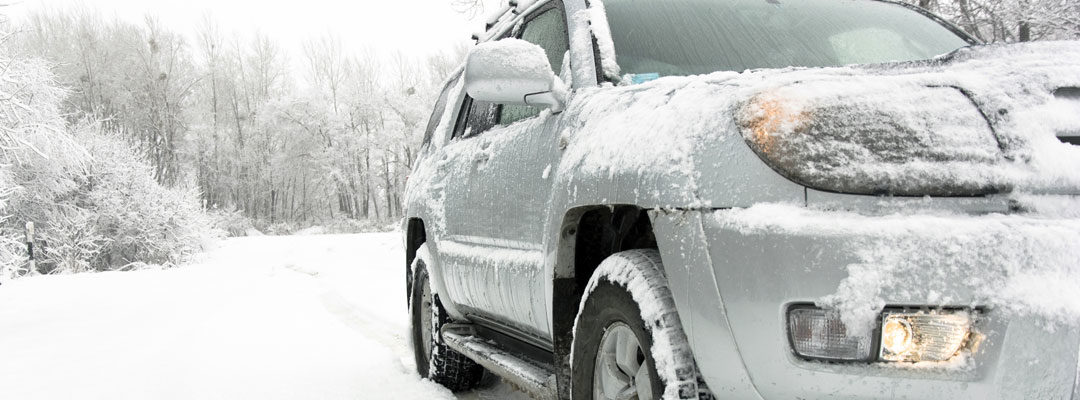If you’re from a region that experiences heavy snow and ice during the winter months, chances are you’re used to driving in less than ideal conditions. However, even if you’re the most experienced driver, if your car isn’t in top shape, you could be at risk for a variety of problems that can prevent you from reaching your destination – or worse – leave you stranded in the cold. Luckily, there are lots of things you can do to ensure your vehicle is ready for the coming winter.
Fill your gas tank
In the summer months you can get away with driving with less than half a tank of gas on a regular basis, but during the winter months, this can be a recipe for disaster. Extremely cold temperatures during the winter can lead to the walls of your nearly-empty gas tank forming condensation, allowing water to mix with the gasoline. The water, which is heavier than the gas, settles on the bottom of the tank and then travels into the fuel lines. When the temperature drops, the water can freeze and block the flow of gas to your engine – leading to very costly repairs. Not only will keeping your tank more than halfway prevent fuel lines from freezing, it will ensure you don’t run out of gas and become stranded in extreme conditions.
Switch your engine oil
Oil is essential to maintain the health of your vehicle’s engine. It acts as a lubricant which prevents the metal surfaces of your engine from grating against each other and causing damage. During the winter, the cold temperatures thicken the oil, which can cause it to flow too slowly between the metal parts of the engine and lead to overheating. Switching to a thinner oil, such as 5W-30, can prevent this from happening in the winter. Refer to your owner’s manual or ask a trusted mechanic to be sure your vehicle is compatible with this type of oil, and don’t forget to have your oil changed every three thousand miles or once every three months.
Use the right engine coolant
Like oil, engine coolant is critical to ensuring your engine doesn’t overheat or corrode. Your engine cooling system will perform best in winter when filled with a 50/50 mixture of antifreeze and distilled water (or event 60% coolant, 40% water), a ratio that will help prevent freezing and boiling over. If you’re unsure, consult your owner’s manual or with a mechanic for recommendations on changing the antifreeze during the winter. Additionally, you may consider pressure testing your cooling system to determine if there are any leaks. Antifreeze testers can be purchased from any local auto parts store and some mechanics will even check it for you free of charge.
Make sure your car battery is in good working condition
During the winter months, the constant cold temperatures can be bad news for your car battery. Colder temperatures force your battery to work at a higher capacity, causing more wear and tear. A typical car battery has a lifespan of about three to five years, so if you know yours has been replaced within that timeframe, do a quick once over to make sure everything looks the way it should. Look for cracks, breaks, loose connections, frayed cables and corrosion, which is indicated by a powdery white substance around the clamps.
Keep your tires properly inflated
Snowy, icy roads are treacherous enough with good tires, but if your tires aren’t up to par, you could find yourself in an extremely dangerous situation. Whatever type of tires you choose to use during the winter, whether it’s regular tires, all-season tires, or studded snow tired, make sure they are properly inflated and providing enough traction to grip the road. You can check your air pressure and fill your tires with air if needed at most gas stations. Consult your car’s manual to be sure you’re using the required amount of pounds per square inch. If you do find yourself in a situation where your vehicle is skidding or sliding on snow or ice, DO NOT use your brakes. Instead, remove your foot from the accelerator easily and guide your car gently in the opposite direction that you’re sliding.
Don’t overlook your windshield (and wipers!)
Ever notice how much windshield fluid you go through in the winter? Even if it’s not actively snowing or sleeting, cars driving in front of you can continually spray your windshield and severely limit your visibility. In the winter, using a windshield washer fluid with antifreeze can prevent freezing even in the most extreme temperatures, as well as help repel road spray. And, don’t forget about your wipers. Broken, cracked, split or ripped windshield wipers can make it impossible to see when dealing with snow, sleet, freezing rain or road spray, and create a dangerous situation for you to be in. Wipers should be replaced every six to 12 months, but if they’re damaged in any way, replace them immediately.
Keep some de-icer on hand (but not in your glove box)
On frigid winter days you may find your car doors or locks frozen shut. Frozen doors can be prevented by using an oil-based cooking spray on all the rubber gaskets around the car door frames, and locks may be treated with a lock lubricant to prevent them from freezing. Never try to force your car door open or force your key to turn in the lock, as this can result in damage to the rubber gaskets or a broken key in your lock. If you haven’t taken any preventative measures and find yourself with a frozen lock or door, there are some things you can do. If your lock is frozen, try coating your key with Vaseline and gently wiggling it in the lock to ensure it’s completely coated. You can also try heating your key with a lighter or match and then inserting it in the lock. If your car door is frozen shut, try spraying a de-icer into the lock – or even a hair dryer if the de-icer doesn’t work.
Keep an emergency kit in your car.
Putting together a car emergency kit and keeping it in your vehicle during the winter is smart, practical and can be invaluable if you become stuck in a snow bank or stranded somewhere you can’t easily access help immediately. Items in your kit should include things like a flashlight, jumper cables, flares, blankets, extra gloves and boots, and bottled water. You may also want to consider keeping extra engine oil, washer fluid and coolant in the emergency kit as well. Never leave your vehicle unless you’re close to help and confident you can easily get there. If you’re in an unfamiliar area or too far to walk to help, stay inside and utilize the blankets and extra outwear to stay warm. If you don’t have a cell phone to contact help, light the flares from your kit and drape a white piece of fabric out of your window or over antenna. For more tips on cold weather kits, read our article on Tips for Putting Together Cold Weather Emergency Kits.


Recent Comments